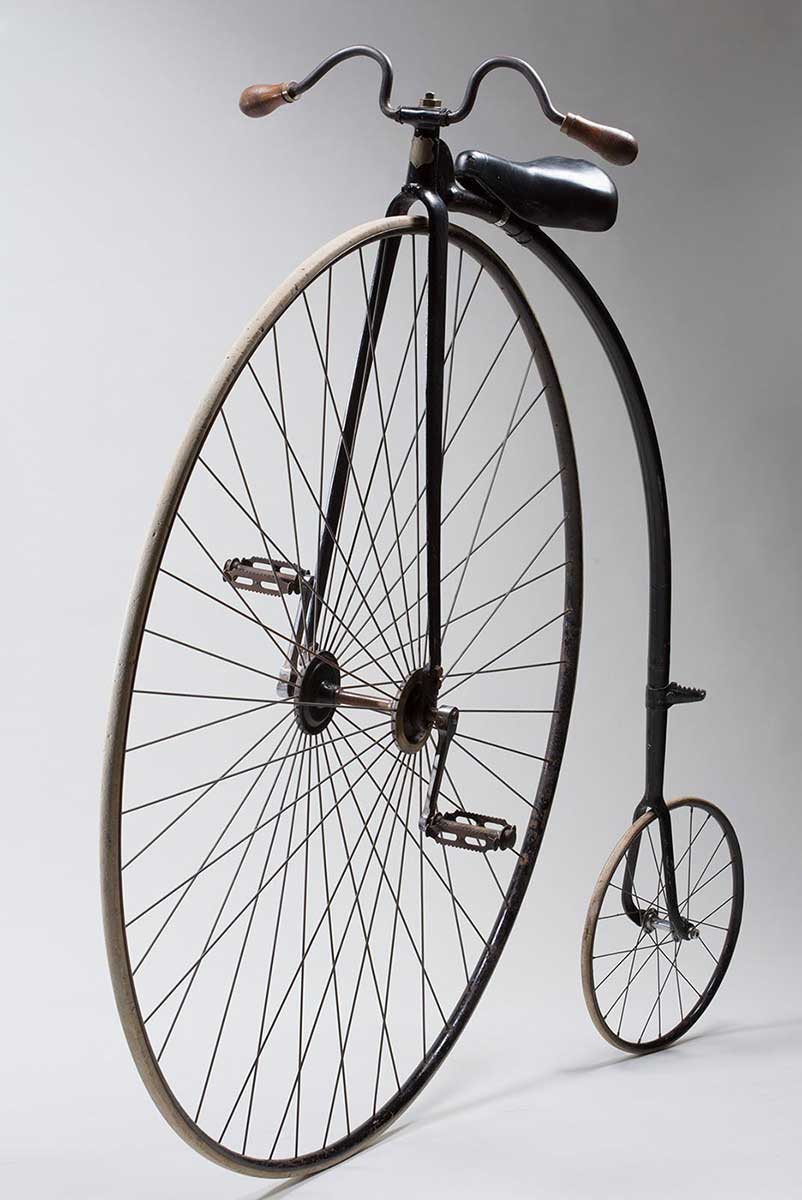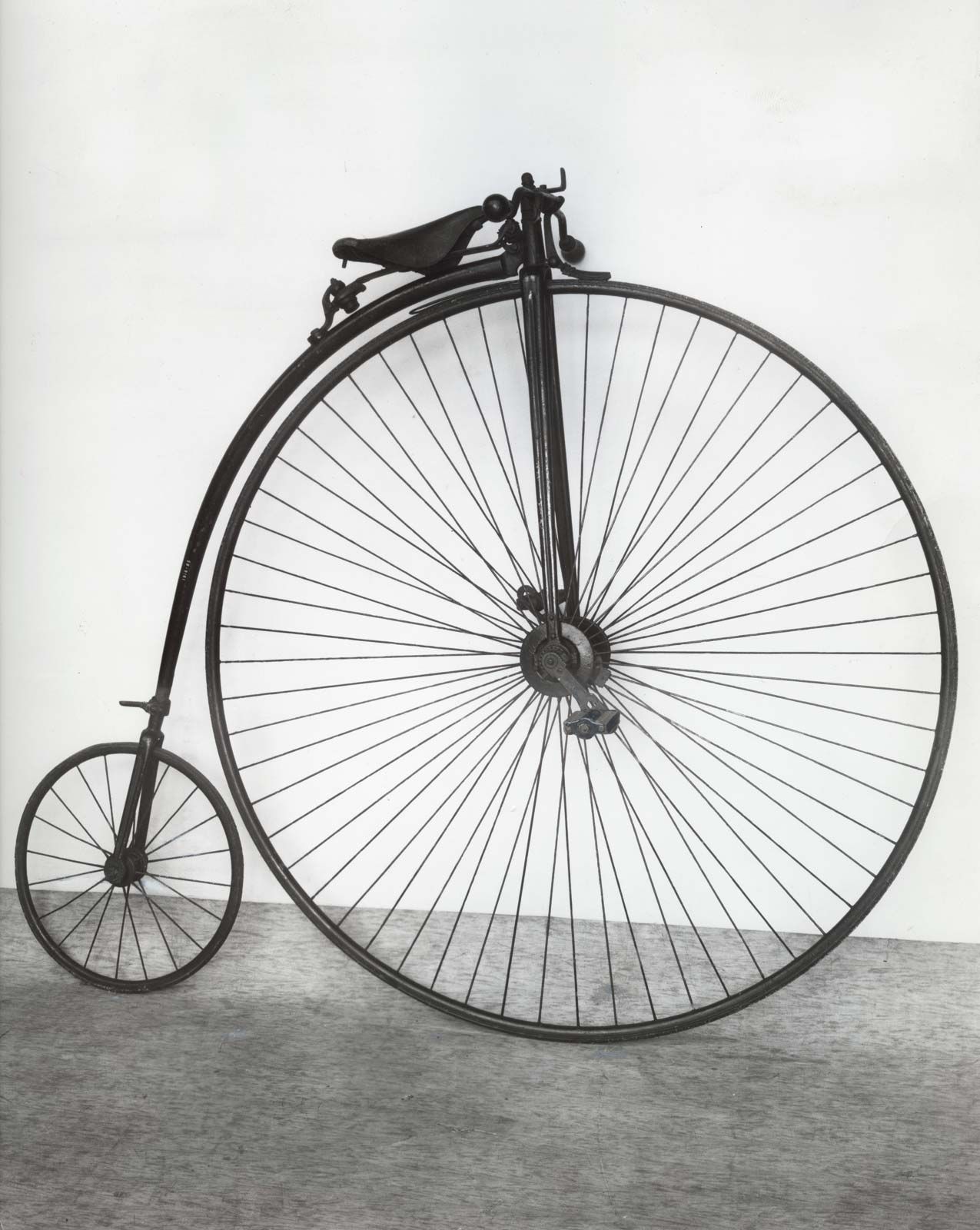Introduction to the Penny-Farthing Bicycle
Origins and Historical Significance
The penny-farthing bicycle, also known as the high wheeler or ordinary, stands out as one of the most unusual and iconic bicycles from the late 19th century. Introduced in the 1870s, this unique bicycle played a significant role in the evolution of cycling, bridging the gap between early velocipedes and modern bicycles. Understanding the origins and historical significance of the penny-farthing provides insight into its unique design and lasting impact on bicycle innovation.
Invented by British engineer James Starley, often hailed as the father of the bicycle industry, the penny-farthing was designed to address the limitations of earlier bicycles, particularly the boneshaker. The boneshaker, with its rigid iron frame and wooden wheels, offered a jarring and uncomfortable ride. Starley’s penny-farthing introduced a larger front wheel, which provided a smoother and faster ride, revolutionizing the cycling experience.
The name “penny-farthing” itself is intriguing, derived from the British coins penny and farthing. The term visually represents the design: the large front wheel (penny) juxtaposed against the much smaller rear wheel (farthing). This distinctive design became a symbol of innovation during the Victorian era, and the penny-farthing quickly gained popularity among enthusiasts and adventurers.
However, the penny-farthing’s significance extends beyond its unusual design. It played a crucial role in popularizing cycling as a recreational activity and sport. Cyclists formed clubs, organized races, and embarked on long-distance journeys, paving the way for the modern cycling culture. Despite its inherent challenges and risks, the penny-farthing remains a celebrated symbol of the early bicycle era, marking a pivotal moment in cycling history.
The origins and historical significance of the penny-farthing underline its role as a transformative invention. By addressing the limitations of earlier bicycles and popularizing cycling, the penny-farthing left an indelible mark on the trajectory of bicycle design and culture.
Unique Design Characteristics
The Large Front Wheel
One of the most striking and unusual features of the penny-farthing bicycle is its large front wheel. The front wheel of a penny-farthing could range anywhere from 40 to 60 inches in diameter, significantly larger than the average wheel size of modern bicycles. Understanding the reasons behind this design choice highlights its advantages and challenges.
The large front wheel was a deliberate innovation aimed at improving riding efficiency and comfort. In the early days of cycling, roads were often rough and uneven, making for a bumpy ride. The larger front wheel of the penny-farthing could absorb more shocks and provide a smoother experience compared to smaller wheels. This made riding on rough terrain significantly more comfortable, though still far from luxurious by today’s standards.
Moreover, the large front wheel allowed for higher speeds. The absence of a geared drivetrain meant that the speed of the bicycle was directly linked to the diameter of the wheel. Consequently, a larger wheel turned more distance per pedal rotation, enabling riders to achieve greater speeds. This was particularly advantageous for those interested in racing or long-distance cycling, where speed was a key factor.
The Small Rear Wheel
Complementing the large front wheel of the penny-farthing was a significantly smaller rear wheel, a design choice that was equally unusual. The rear wheel, often about 12 to 18 inches in diameter, served specific functions that contributed to the bicycle’s overall performance. Understanding the role of the small rear wheel provides insight into the unique dynamics of the penny-farthing.
The primary function of the small rear wheel was to provide stability and support. Given the large size of the front wheel, the small rear wheel helped balance the bicycle, preventing it from tipping backward. This design allowed the rider to maintain a relatively upright position, which was essential for effective pedaling and control. However, this also meant that the majority of the rider’s weight was concentrated over the front wheel, influencing the bicycle’s handling characteristics.
Another advantage of the small rear wheel was its contribution to the overall lightweight design of the penny-farthing. By minimizing the size and weight of the rear wheel, the bicycle’s overall weight was reduced, making it easier to maneuver and pedal. This was particularly beneficial for riders who needed to navigate urban environments or tackle steep inclines.
However, the small rear wheel also introduced limitations. The lack of a significant rear brake meant that the front wheel bore the brunt of braking, which could be risky. Sudden or forceful braking on the front wheel risked causing a “header,” where the rider was thrown forward over the handlebars. This required riders to develop specific techniques for safe braking, such as using their legs to slow the bicycle gradually.
Impact and Legacy of the Penny-Farthing
Influence on Modern Bicycle Design
The penny-farthing bicycle, despite its unusual design, had a profound influence on the development of modern bicycles. Understanding this influence reveals how the innovations introduced by the penny-farthing paved the way for subsequent advancements in bicycle engineering.
One of the key contributions of the penny-farthing was the emphasis on wheel size and ride comfort. The large front wheel demonstrated the advantages of a smoother ride and higher speeds, inspiring future designers to explore ways to balance these benefits with safety. This led to the development of the “safety bicycle” in the late 1880s, which featured equal-sized wheels and a chain-driven rear wheel. The safety bicycle addressed many of the risks associated with the penny-farthing, providing a more stable and accessible design while retaining the benefits of improved ride comfort and efficiency.
The penny-farthing also highlighted the importance of materials and construction techniques in bicycle design. The use of lightweight materials and reinforced frames in penny-farthings set a precedent for future bicycles, where weight reduction and durability became key considerations. This focus on materials and engineering continued to influence bicycle manufacturing, leading to the development of stronger and lighter frames in the 20th century.
Enduring Symbolism and Cultural Impact
Beyond its technical contributions, the penny-farthing remains an enduring symbol of innovation and adventure in the cycling world. Its unique design and historical significance have cemented its place in cultural memory, making it a beloved icon of the Victorian era. Understanding the cultural impact of the penny-farthing reveals its lasting legacy in popular culture and historical preservation.
The visual distinctiveness of the penny-farthing continues to captivate the imagination of people around the world. Its emblematic design, with the towering front wheel and diminutive rear wheel, evokes a sense of nostalgia and wonder. The penny-farthing often appears in historical reenactments, parades, and vintage cycling events, serving as a tangible link to the past. Museums and historical societies frequently feature penny-farthings in their collections, highlighting their role in the evolution of transportation and engineering.
The cultural impact of the penny-farthing also extends to its representation in art and media. The bicycle has been depicted in various forms of art, including paintings, illustrations, and sculptures, symbolizing innovation and the spirit of exploration. In literature and film, the penny-farthing often represents the transformative power of technology and the adventurous spirit of the 19th century. Its appearances in works of fiction and historical documentaries help preserve its legacy and introduce new generations to its significance.
Moreover, the penny-farthing has inspired a sense of community among vintage cycling enthusiasts. Collectors, restorers, and riders of penny-farthings form tight-knit groups that celebrate the history and quirks of this unique bicycle. These enthusiasts share knowledge, organize events, and promote the preservation of penny-farthings, ensuring that their legacy endures.
The enduring symbolism and cultural impact of the penny-farthing highlight its role as more than just a mode of transportation. It serves as a powerful icon of innovation, history, and community, bridging the past and present in the world of cycling.
Conclusion: The Legacy of the Penny-Farthing Bicycle
The penny-farthing bicycle, with its unusual design and historical significance, remains a remarkable piece of cycling history. By understanding its origins, design characteristics, and lasting impact, we can appreciate how this unique bicycle transformed the world of cycling and left an indelible mark on both technology and culture.
The penny-farthing’s large front wheel and small rear wheel exemplify a bold approach to improving ride comfort and speed, despite the inherent challenges. The innovations introduced by the penny-farthing paved the way for the development of safer and more efficient bicycles, influencing modern bicycle design.
Culturally, the penny-farthing continues to captivate the imagination, serving as a symbol of innovation and the adventurous spirit of the Victorian era. Its representation in art, media, and historical events underscores its enduring legacy and the community it inspires among vintage cycling enthusiasts.
In conclusion, the penny-farthing bicycle stands as a testament to the ingenuity and progress of its time. Its unique design, historical significance, and lasting impact on both technology and culture ensure that it remains a celebrated icon in the world of cycling. The legacy of the penny-farthing reminds us of the transformative power of innovation and the enduring appeal of exploring new horizons.


